Every Christmas Eve, there's one thing my family can't celebrate Noche Buena without: our homemade ube halaya. You know that smooth, purple yam jam that's always present at Filipino gatherings? Yes, that one!
I used to think only my Lola could make it perfectly. But after lots of practice (and many burnt pots later), I've finally nailed down this simple recipe that tastes just like the ones we had back home.
Don't worry if you've never made ube halaya before, this recipe is as straightforward as it gets. All you need are six basic ingredients and some arm muscle for stirring. When you smell that sweet ube aroma filling your kitchen and see that beautiful purple color coming together, you'll forget all about the stirring! It tastes so much better than store-bought versions.
Perfect for spreading on hot pandesal, adding to halo-halo, or honestly, just eating it straight from the jar with a spoon (we've all been there!).
Jump to:
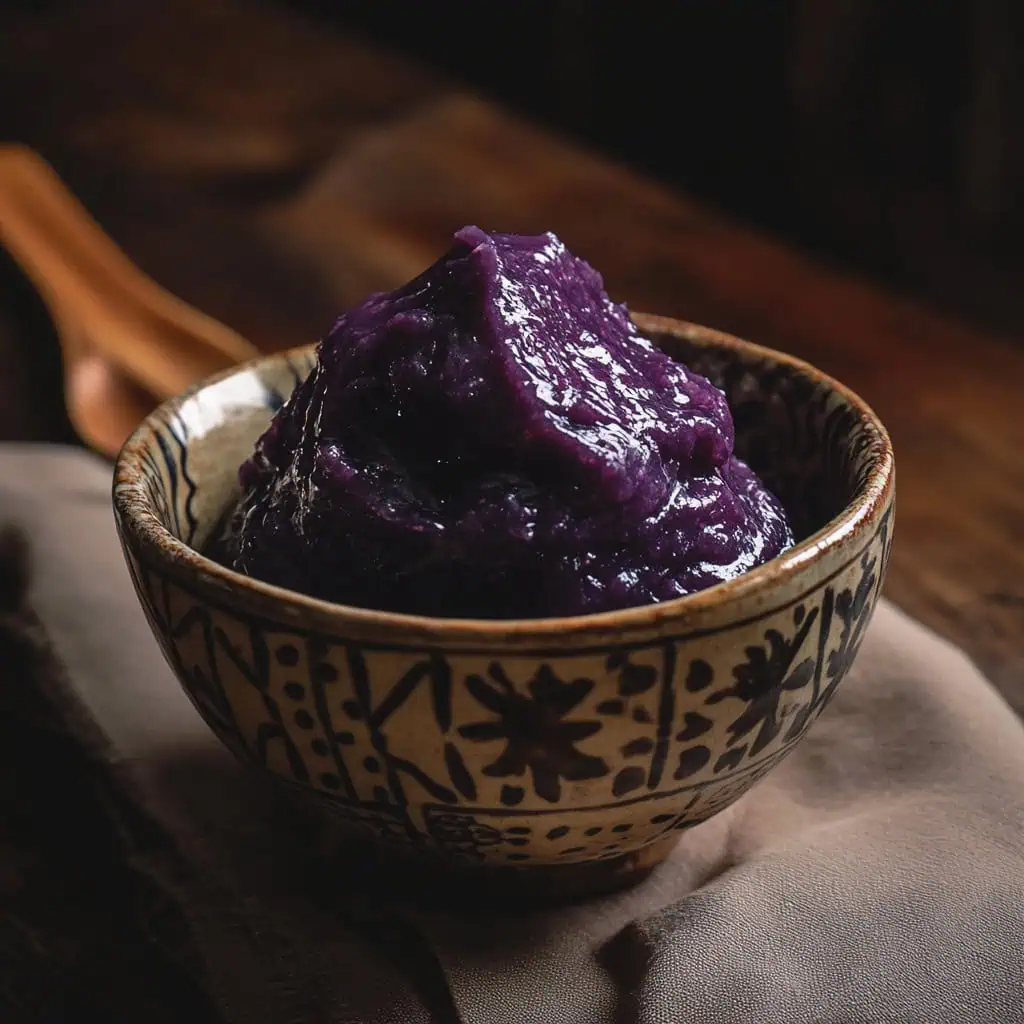
Why You'll Love This Recipe
- Authentic Taste: This recipe captures the true essence of traditional Filipino ube halaya
- Simple Ingredients: Uses only 6 basic ingredients you can find in Asian grocery stores
- Cost-Effective: Much more affordable than store-bought versions or imported Good Shepherd ube
- Customizable Texture: You can control the consistency from spreadable to firm
- No Artificial Ingredients: Pure ube flavor without unnecessary additives
- Make-Ahead Friendly: Perfect for batch cooking and freezing
Ingredients
This recipe uses carefully selected ingredients that work together to create authentic ube halaya. Fresh ube provides the natural purple color and distinctive flavor that forms the foundation of this Filipino classic.
Evaporated milk adds richness while condensed milk brings sweetness and helps create that signature thick, creamy texture. Brown sugar enhances the natural flavor of ube with its slight molasses notes, creating more depth than white sugar alone.
Butter contributes a silky mouthfeel and helps prevent the mixture from sticking during the long cooking process. A small amount of salt balances the sweetness and intensifies the natural ube flavor.
Together, these six basic ingredients create a perfectly balanced dessert that showcases the true essence of ube without any artificial additives.
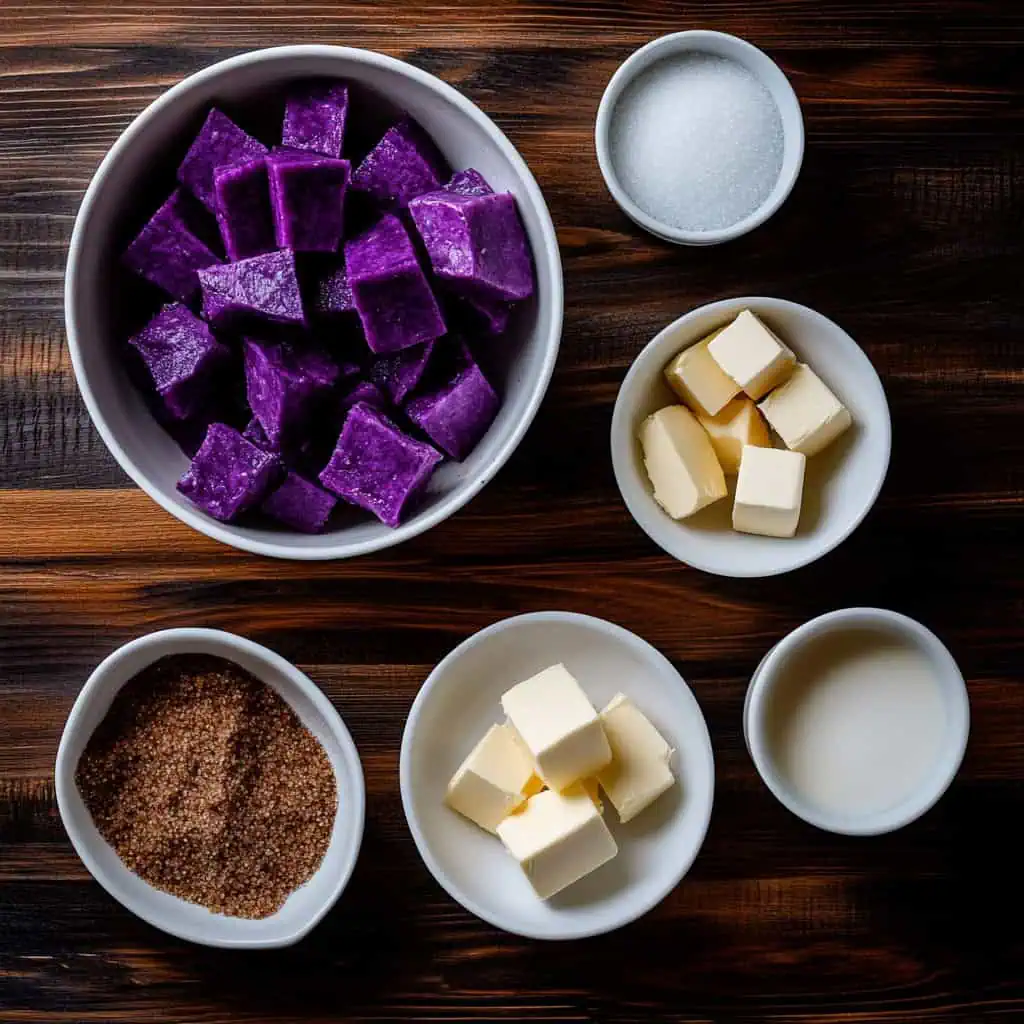
- 2.2 lbs fresh ube (purple yam)
- 1 12-oz can evaporated milk
- 1 10-oz can condensed milk
- ½ cup packed brown sugar
- ¼ cup unsalted butter
- ½ teaspoon salt
Equipment
- Heavy-bottomed Wok or Pan - Provides even heat distribution and prevents burning while cooking the jam for an extended period. The wide surface area allows moisture to evaporate efficiently.
- Wooden Spoon - Essential for continuous stirring without scratching your cookware. The long handle keeps your hand away from the hot mixture.
- Potato Masher - Creates that smooth, lump-free texture that defines quality ube halaya.
- Large Pot - Used for boiling the fresh ube until tender before mashing.
- Heat-proof Glass Containers - Perfect for storing your finished ube halaya safely.
- Measuring Cups and Spoons - Ensures recipe accuracy for consistent results.
- Cheese Grater (optional) - If you prefer a more traditional grated texture instead of a completely smooth consistency.

How To Make
- Prepare the Ube: Fill a large pot with water and bring to a boil. Cut the fresh ube into 2-inch pieces for even cooking. Boil for 30 minutes or until fork-tender. Drain and cool for 10 minutes until warm enough to handle safely.
- Mash the Ube: Peel the warm ube and thoroughly mash with a potato masher until smooth, ensuring all lumps are broken down. Set aside.
- Begin Cooking: Place a large wok or heavy-bottomed pan over medium heat. Pour in the evaporated milk and add the brown sugar. Stir until the sugar completely dissolves.
- Combine Ingredients: Add the mashed ube, condensed milk, and salt to the pan. Begin stirring constantly - this critical step prevents burning. Continue for about 20 minutes until the mixture noticeably thickens.
- Add Butter: Incorporate the butter and continue stirring until fully melted and incorporated. Cook while stirring for another 30 minutes. The ube halaya is ready when you can draw a line through the center with your spoon and it holds its shape.
- Final Cooking (Optional): For a firmer texture, continue stirring for another 10 minutes. Remember that ube halaya thickens further as it cools.
- Cool and Store: Transfer to clean heat-proof containers and cool completely before refrigerating.

Tips from Lola's Kitchen
- Stirring Technique - Use a figure-eight motion when stirring to ensure all parts of the mixture cook evenly and prevent burning at the edges.
- Heat Management - Keep heat at medium throughout cooking; high heat will quickly burn the bottom layer.
- Test for Doneness - The spoon should leave a clean path when drawn through the mixture that doesn't immediately flow back together.
- Timing Matters - Don't rush the cooking process; the slow reduction concentrates flavors and develops the right texture.
- Warm Mashing - Always mash ube while it's still warm for smoother results with less effort.
- Butter Quality - Use unsalted butter to control saltiness precisely; the small amount of salt in the recipe enhances the ube's natural sweetness.
- Cooling Process - Allow to cool uncovered first to prevent condensation from making the top watery, then cover once at room temperature.
Substitutions
- Fresh Ube Alternative - If fresh ube is unavailable, use 2 lbs frozen grated ube plus 1 teaspoon ube extract for color enhancement.
- Milk Options - Replace evaporated milk with 1 cup fresh milk (reduce total quantity by ¼ cup).
- Sweetener Variations - Substitute brown sugar with white sugar in equal amounts, though this will slightly alter the depth of flavor.
- Butter Substitute - Margarine can replace butter in equal amounts, but adjust salt accordingly as margarine often contains more sodium.
- Dietary Needs - For a dairy-free version, substitute with coconut milk and coconut oil, though texture will be slightly different.
Troubleshooting
Lumpy Texture
- Cause: Insufficient mashing or cooling before mashing
- Solution: Mash ube thoroughly while still warm. If lumps persist, pass through a fine mesh sieve before continuing.
Burning on Bottom
- Cause: Heat too high or inconsistent stirring
- Solution: Reduce heat immediately and maintain constant stirring. If slightly burned, transfer to a clean pot, being careful not to scrape the burned portion.
Too Thick
- Cause: Overcooked or reduced too much
- Solution: Add a splash of evaporated milk and stir until incorporated. Reduce cooking time for future batches.
Too Thin
- Cause: Insufficient cooking time
- Solution: Continue cooking while stirring constantly. Remember the mixture will thicken significantly upon cooling.
Color Not Purple Enough
- Cause: Variability in natural ube pigmentation
- Solution: Add ½ teaspoon ube extract, but not more than 1 teaspoon to maintain authentic flavor balance.
Storage & Reheating
- Refrigerator Storage - Keep in an airtight container for up to 1 week. Press plastic wrap directly onto the surface to prevent a skin from forming.
- Freezer Storage - Portion into smaller containers and freeze for up to 3-4 months. Place plastic wrap directly on the surface before sealing to prevent freezer burn.
- Thawing Method - Thaw frozen ube halaya overnight in the refrigerator for best texture retention.
- Reheating - Warm in the microwave in 15-second intervals, stirring between each, until just softened. Avoid overheating as it changes the texture.
- Room Temperature Safety - Ube halaya can remain at room temperature for up to 2 hours before refrigeration is necessary.
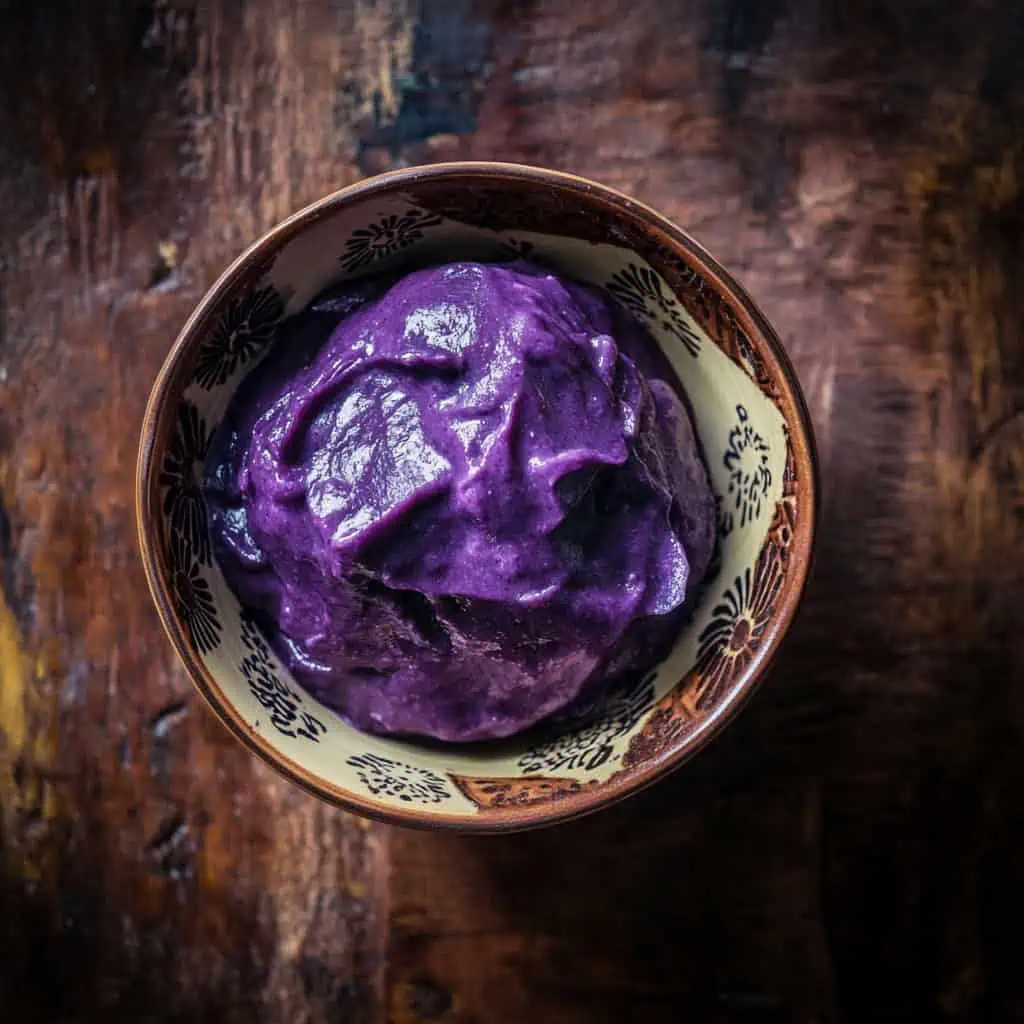
FAQ
Can I use purple sweet potato instead of ube?
No, purple sweet potato (kamote) has a distinctly different flavor and texture profile. True ube gives the authentic Filipino taste that makes this dessert special.
Why is my ube not vibrant purple?
Fresh ube varies naturally in color intensity. For a deeper purple hue without affecting flavor, add up to 1 teaspoon of ube extract during cooking.
Can I reduce the sugar for a less sweet version?
Yes, you can reduce brown sugar by up to ¼ cup, but note this will affect both flavor balance and preservation time.
How do I know when my ube halaya is cooked enough?
The mixture should leave a clean line when you draw your spoon through it and should be thick enough to hold its shape momentarily. It will continue to thicken as it cools.
Is it normal for ube halaya to form a skin when refrigerated?
Yes, this is normal. To prevent it, place plastic wrap directly on the surface before refrigerating or stir before serving.
Can I use an electric mixer to mash the ube?
Yes, but be careful not to overmix as it can develop a gummy texture. Pulse gently rather than continuous mixing.
Why is constant stirring so important?
Constant stirring prevents burning, ensures even cooking, and helps achieve the signature smooth texture of quality ube halaya.
What's the best way to serve ube halaya for a gathering?
For serving at parties, portion into small decorative jars with tiny wooden spoons, or slice a firmer version into diamond shapes and dust with coconut.
Can I make this recipe in advance for a special occasion?
Absolutely. Ube halaya tastes even better after 24 hours as the flavors meld. Make it 1-2 days before your event for optimal flavor.
How can I tell if my ube halaya has spoiled?
Discard if you notice any mold, sour smell, separation of liquids, or significant color changes. When in doubt, it's safer to make a fresh batch.
Related
Looking for other recipes like this? Try these:
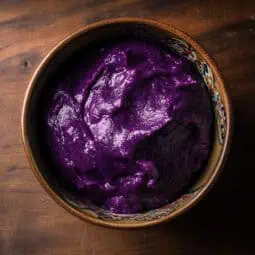
Authentic Ube Halaya Recipe (Filipino Purple Yam Jam)
Equipment
- Heavy-bottomed Wok (kawali) For even heat distribution and easier stirring
- Wooden spoon (sandok na kahoy) Traditional tool that prevents scratching and provides better control
- Potato Masher For achieving smooth, lump-free ube texture
- Cheese Grater (optional) If you prefer the traditional grated texture
- Large Pot For boiling the fresh ube
- Heat-proof Glass Containers For storing the finished product
- Measuring cups and spoons For precise measurements
Ingredients
- 2.2 lbs fresh ube purple yam / ube
- 1 12-oz can evaporated milk
- 1 10-oz can condensed milk gatas na malapot
- ½ cup packed brown sugar asukal na pula
- ¼ cup unsalted butter mantikilya
- ½ teaspoon salt asin
Instructions
- Prepare a large pot of water and bring it to a boil. Cut the fresh ube into 2-inch pieces for even cooking. Place the ube pieces in the boiling water and cook for 30 minutes or until a fork easily pierces through. Drain and let cool for 10 minutes until warm enough to handle.
- Peel the warm ube and mash thoroughly using a potato masher until smooth, making sure to break down any lumps. Set aside.
- Place a large wok or heavy-bottomed pan over medium heat. Pour in the evaporated milk and add the brown sugar. Stir until the sugar completely dissolves.
- Add the mashed ube, condensed milk, and salt to the pan. Begin stirring constantly - this is important as the mixture can easily burn. Keep stirring for about 20 minutes or until the mixture starts to thicken noticeably.
- Add the butter cubes and continue stirring until fully melted and incorporated. Keep cooking and stirring for another 30 minutes. You'll know it's done when you can draw a line through the middle of the mixture with your spoon and it holds its shape.
- For a firmer texture, continue stirring for another 10 minutes. Remember that the ube halaya will thicken further as it cools. Transfer to clean heat-proof containers and let cool completely before refrigerating.
- Store in an airtight container in the refrigerator for up to one week, or freeze for up to 3 months. Let frozen ube halaya thaw overnight in the refrigerator before using.
Tips from Lola's Kitchen
- Continuous stirring prevents burning and ensures even cooking
- Keep heat at medium - High heat will burn the bottom
- Test doneness by drawing a line through the mixture - it should hold its shape
- Mash the ube while still warm for easier processing
- Use unsalted butter to control the saltiness better
Nutrition
The Story Behind Ube Halaya
Long before trendy purple desserts took over social media, ube halaya has been gracing Filipino tables for generations. This beloved purple yam jam holds a special place in Philippine cuisine, particularly in regions where ube (purple yam) grows abundantly in the rich volcanic soil of provinces like Bohol and Benguet.
The story of ube halaya is deeply rooted in Filipino resourcefulness and creativity. When local farmers had an abundance of purple yams, they needed a way to preserve their harvest. Through a process of cooking the yams with milk and sugar while continuously stirring - a technique passed down through generations - they created this smooth, creamy delicacy that could last longer than fresh ube.
The dish gained widespread popularity thanks to the Good Shepherd nuns of Baguio City. In the 1970s, these nuns began making and selling ube halaya to support their charitable missions. Their version, made with pure ingredients and careful attention to quality, became the gold standard that Filipinos measure all ube halaya against. Today, people still line up at the Good Shepherd Convent just to bring home their famous purple yam jam.
What makes ube halaya truly special isn't just its striking purple color or sweet taste - it's how it brings Filipino families together. During Christmas season, particularly on Noche Buena (Christmas Eve), you'll find this purple jam taking center stage on dessert tables across Filipino homes worldwide. The process of making it, with its required patience and constant stirring, often becomes a family activity, with recipes and techniques passed down from lolas (grandmothers) to their children and grandchildren.
Today, as global interest in Filipino cuisine grows, ube halaya has captured attention worldwide for its unique color and versatile uses. From being a simple preserved yam dish, it has evolved into a key ingredient in modern Filipino desserts - from ice cream to cheesecakes, donuts to milk teas. Yet despite its trendy status, at its heart, ube halaya remains a humble reminder of Filipino culinary heritage, family traditions, and the simple joy of sharing homemade food with loved ones.
Want to know what makes this recipe extra special? Unlike commercial versions that rely on artificial colors and flavors, this recipe stays true to the traditional method of making ube halaya, using pure purple yam and simple ingredients just like how our ancestors made it. The result? A naturally purple, creamy jam that captures the authentic taste of Philippine ube halaya.
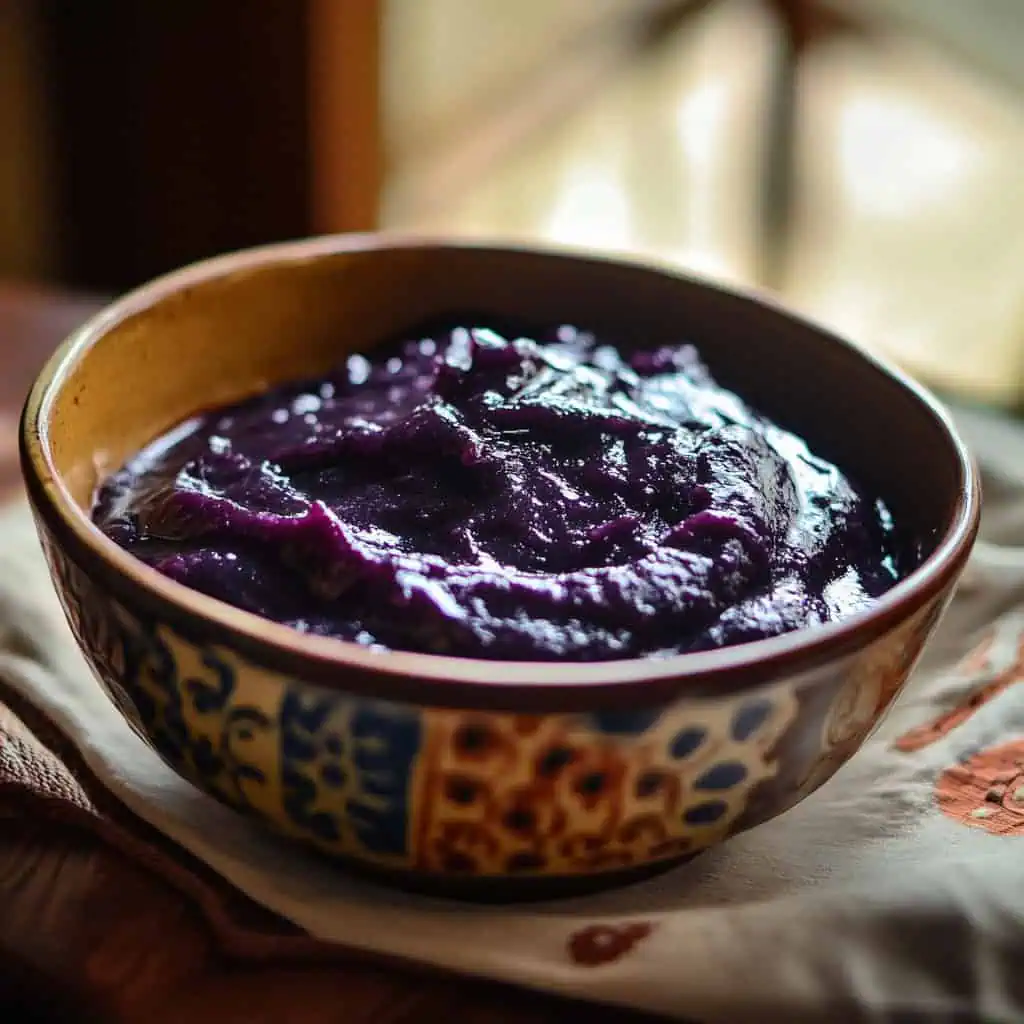






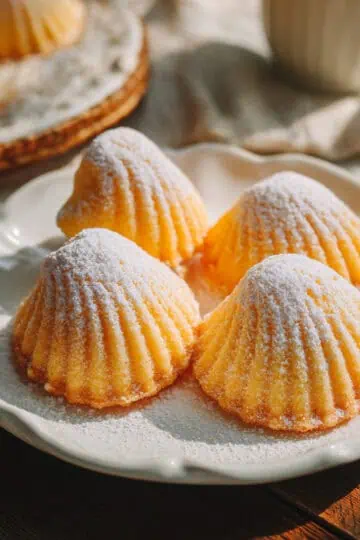
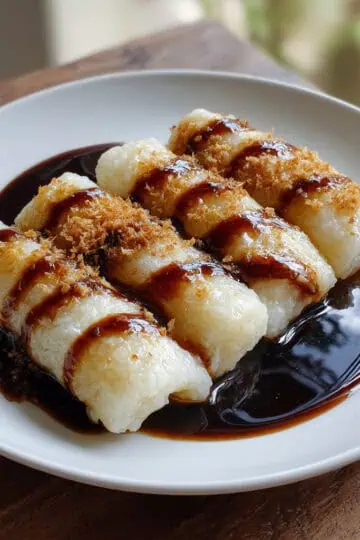

Comments
No Comments